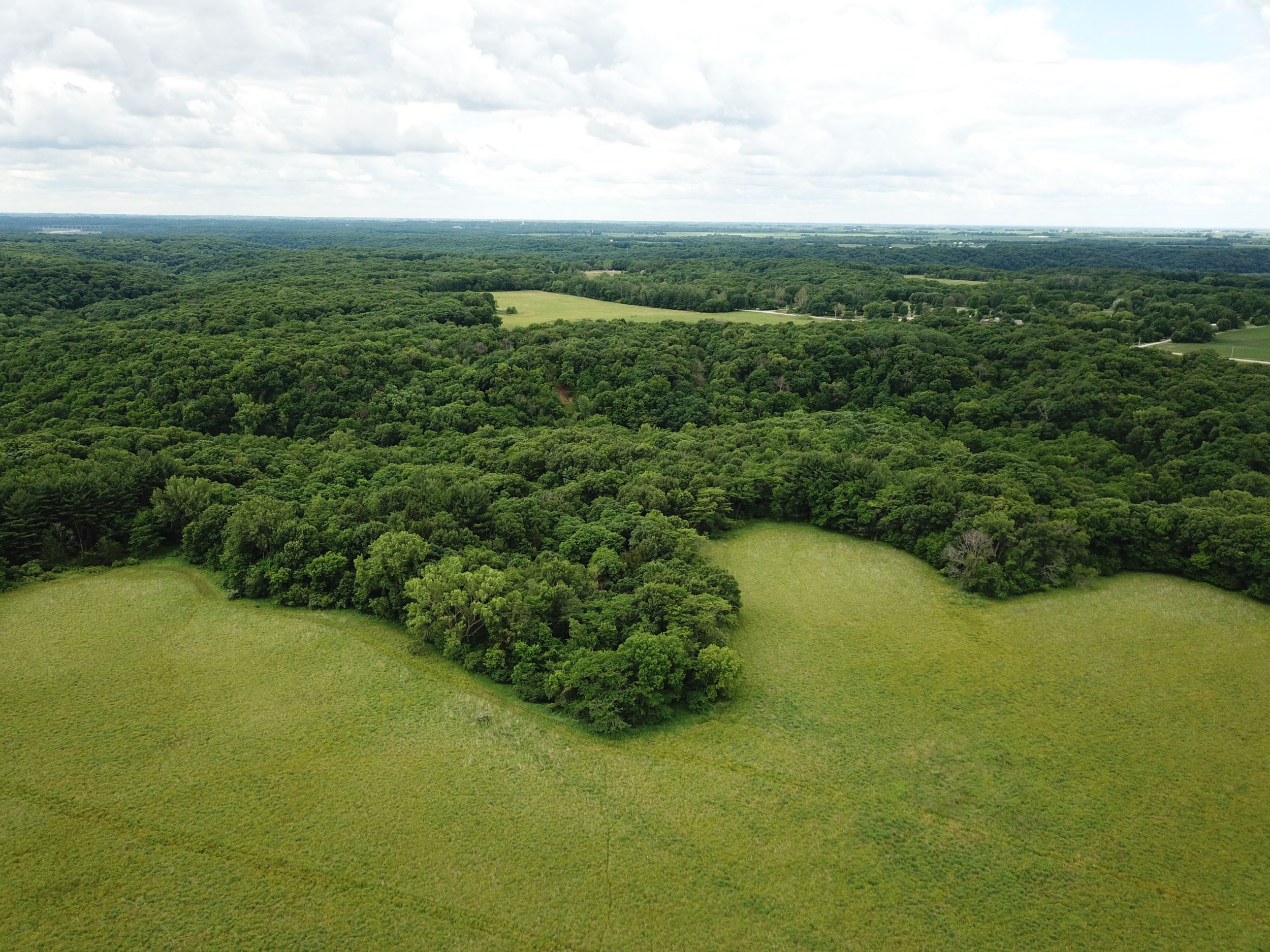All Things Considered
By Katy Heggen on August 17, 2020 in Blog

When Iowa Natural Heritage Foundation (INHF) purchased the 1,011-acre former Central Iowa 4-H camp near Madrid late last September, for many, the moment was bittersweet. It marked both an end, but also a new beginning. One that was filled with possibility.
Conversations among staff, with public and private partners and those who know the property intimately about what will become of this isle of wilderness have continued in the days, weeks and months since. As these conversations continue to evolve, a new vision is beginning to take shape. One that affirms this will continue to be a space for people and nature.
The uncertainty brought on by COVID-19 has hindered parts of the process, delaying some definitive decisions. How could it not? But INHF’s resolve to permanently protect this place, and its capacity to do so, remains unchanged.
While the pandemic may have added a layer of complexity to the project, it has also provided an opportunity for INHF to come to know fauna this place in a way that helps us to consider its full potential.
Wild roots
Encompassing a mix of native and reconstructed habitats including woodland cloaked hills and valleys, pockets of remnant and reconstructed prairie, restored wetlands and a tributary of the Des Moines River, this area is flush with native flora and fauna.
Each spring, ephemeral wildflowers (short-lived blooms that appear in early spring) carpet the forest floor. This year, staff began taking inventory of some of the species present. Dutchman’s breeches, wild trout lily, bloodroot, false rue anemone, hepatica and Lady’s tresses, a rare species, have all been documented on the property. Many of these blooms were featured in a virtual hike led by Molly McGovern, former Polk County Conservation Board natural resource specialist and long-time friend of INHF, when COVID-19 prevented INHF from inviting people to come experience them in-person.
This year’s statewide land stewardship internship crew will spend a day at the property, removing invasive species from its woodlands so native plants may thrive.
They’re part of a long legacy set forth by former 4-H staff, counselors and campers turned conservation professionals, and represent the new beginnings of what INHF anticipates will be a long relationship between the next generation of conservation leaders and this special place.
“Getting these young land stewards connected with such a special place will not only help the land, the experience will also fuel their passion as they continue into their career,” said Derek Miner, INHF land stewardship associate.
Wild creatures have always had their place here. Deer, foxes and the occasional bobcat have made a home or hunted in the valley over the years. But the depth of the diverse bird populations that have been documented here is particularly impressive.
Bruce Ehresman, a renowned Iowa bird expert, has catalogued more than 185 species over the years. Doug Harr, president of Iowa Audubon, and Karl Jungbluth, both Iowa birding legends in their own right, are hoping to be able to reaffirm and even expand the list to include additional species.
“It’s really important to know what species are using it and which of those species are in decline,” Harr said. “Then we can ask what we can do to stabilize and support those species.”
Harr said they have already catalogued 108 bird species this year, including Wood thrush and Golden-winged warblers, two species in serious decline. Given the location, size and quality of the habitat, they expect to eventually document well over 200 species. Harr also notes the importance of this habitat in the context of the larger protected corridor.
“It’s extremely critical for maintaining the Des Moines River corridor, one of the primary routes of bird migration through the central U.S. In an intensive agricultural state, large complexes of land like this are incredibly important for resident species, too.”
A new form
INHF’s focus has always been, and continues to be, protecting the land’s natural features. That said, historically, camp conversions involve decisions about existing structures.
Ultimately, what stays and what is removed will be determined both by taking into account the varying conditions of the buildings and how they collectively fit into the long-term vision for this place.
Engineers, master builders and craftsmen specializing in sustainability have helped determine what can be salvaged, both from derelict buildings, and those whose place has yet-to-be-decided.
Some structures, such as the ropes course and climbing wall, have been deemed better suited for another setting. With the assistance of camp alumni, including some that remain active in the camp professionals community, INHF is working with nearby camps and organizations that have expressed interest in the equipment and structures.
“In short, we’re looking for ways to repurpose materials,” said INHF Donor Relations Director Abby Hade Terpstra. “We recognize that for some, there’s a strong attachment to the infrastructure here. We want to be empathetic to that and celebrate this place’s past by finding new homes for these things, while also embracing its future.”
Renewed resolve
As the vision for the former 4-H camp continues to take shape, so does INHF’s connection to this place. The generosity with which it continues to reveal itself from season to season is humbling, to say the least. It’s a generosity that we look forward to sharing.
If nothing else, this time has reaffirmed that protecting this place was the right move, and renewed INHF’s resolve to see it through. After all, good things take time, as they should.